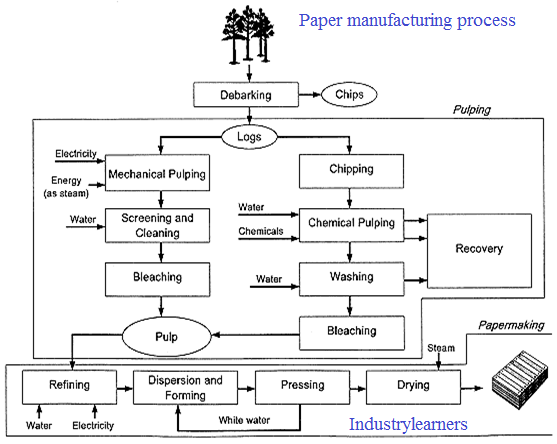Paper manufacturing process
The manufacturing process is outlined below.
Step 1 – Wood preparation The bark is removed from in-coming logs, and these are then chipped. Sometimes, the wood arrives at the plant already chipped, meaning that this step is unnecessary.
Step 2 – Cooking The wood chips are heated in a solution of NaOH and Na2S in a pressure cooker, during which time a lot of the lignin (the reinforcing susbstance that make tree cells wood hard and ‘woody’ rather than soft like those of other plants) is removed from the wood. The pressure is then released suddenly, causing the chips to fly apart into fibres.
Step 3 – Pulp washing The pulp is washed with water to wash out the cooking chemicals and lignin from the fibre so that they will not interfere with later process steps.
Step 4 – Pulp screening A sieve is used to remove knots and clumped-together uncooked fibres from the pulp.
Step 5 – Bleaching This is done in two stages. Firstly the pulp is treated with NaOH in the presence of O2. The NaOH removes hydrogen ions from the lignin and then the O2 breaks down the polymer. Then, the pulp is treated with ClO2 then a mixture of NaOH, O2 and peroxide and finally with ClO2 again to remove the remaining lignin.
Step 6 – Paper making The fibres are mechanincally treated to make them bond better to each other (strengthening the paper), chemicals added to provide special properties such as colour or water resistance, and then the water is squeezed out and the pulp is rolled smooth and dried.

